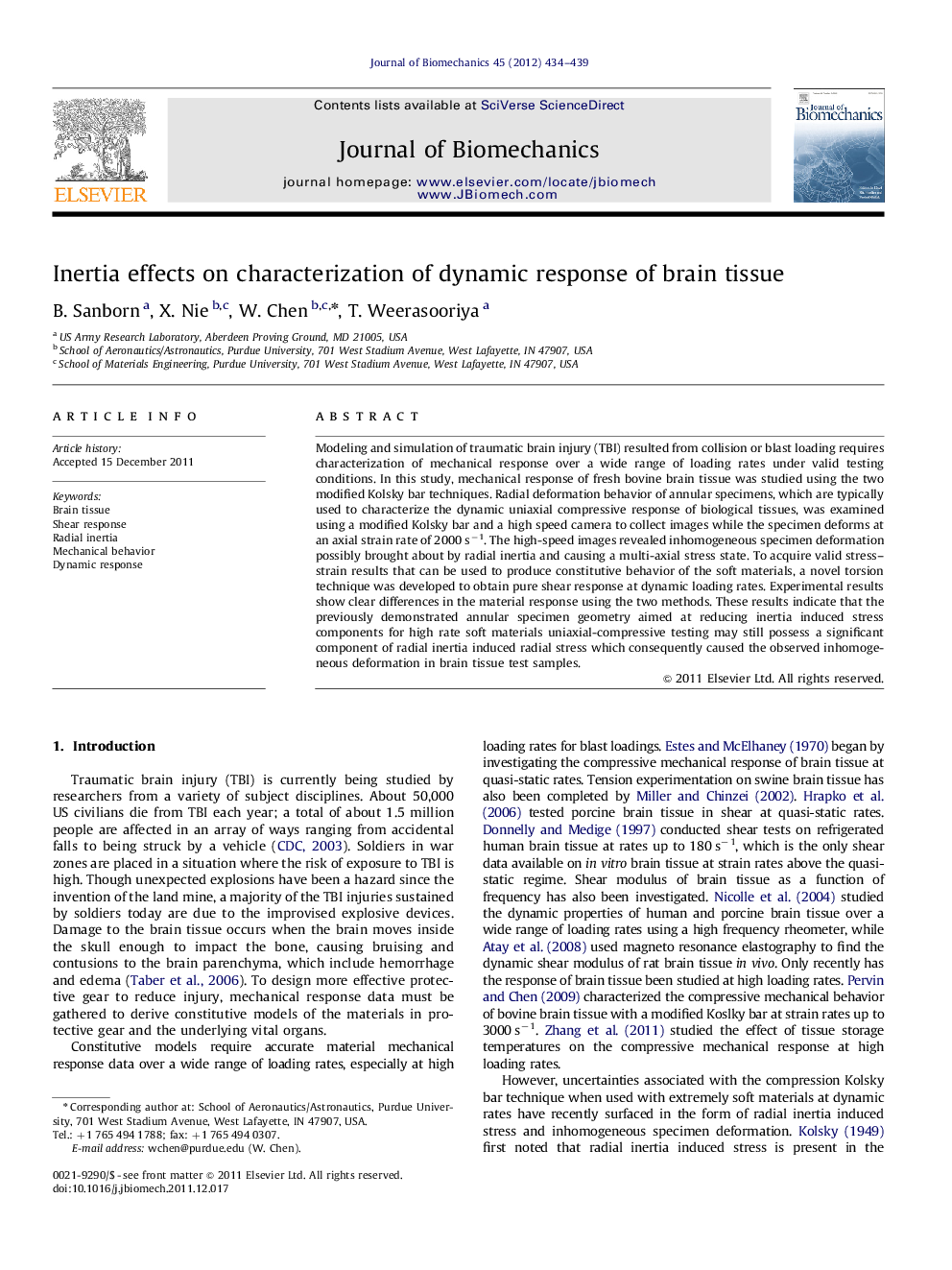| Article ID | Journal | Published Year | Pages | File Type |
|---|---|---|---|---|
| 10432655 | Journal of Biomechanics | 2012 | 6 Pages |
Abstract
Modeling and simulation of traumatic brain injury (TBI) resulted from collision or blast loading requires characterization of mechanical response over a wide range of loading rates under valid testing conditions. In this study, mechanical response of fresh bovine brain tissue was studied using the two modified Kolsky bar techniques. Radial deformation behavior of annular specimens, which are typically used to characterize the dynamic uniaxial compressive response of biological tissues, was examined using a modified Kolsky bar and a high speed camera to collect images while the specimen deforms at an axial strain rate of 2000Â sâ1. The high-speed images revealed inhomogeneous specimen deformation possibly brought about by radial inertia and causing a multi-axial stress state. To acquire valid stress-strain results that can be used to produce constitutive behavior of the soft materials, a novel torsion technique was developed to obtain pure shear response at dynamic loading rates. Experimental results show clear differences in the material response using the two methods. These results indicate that the previously demonstrated annular specimen geometry aimed at reducing inertia induced stress components for high rate soft materials uniaxial-compressive testing may still possess a significant component of radial inertia induced radial stress which consequently caused the observed inhomogeneous deformation in brain tissue test samples.
Related Topics
Physical Sciences and Engineering
Engineering
Biomedical Engineering
Authors
B. Sanborn, X. Nie, W. Chen, T. Weerasooriya,
